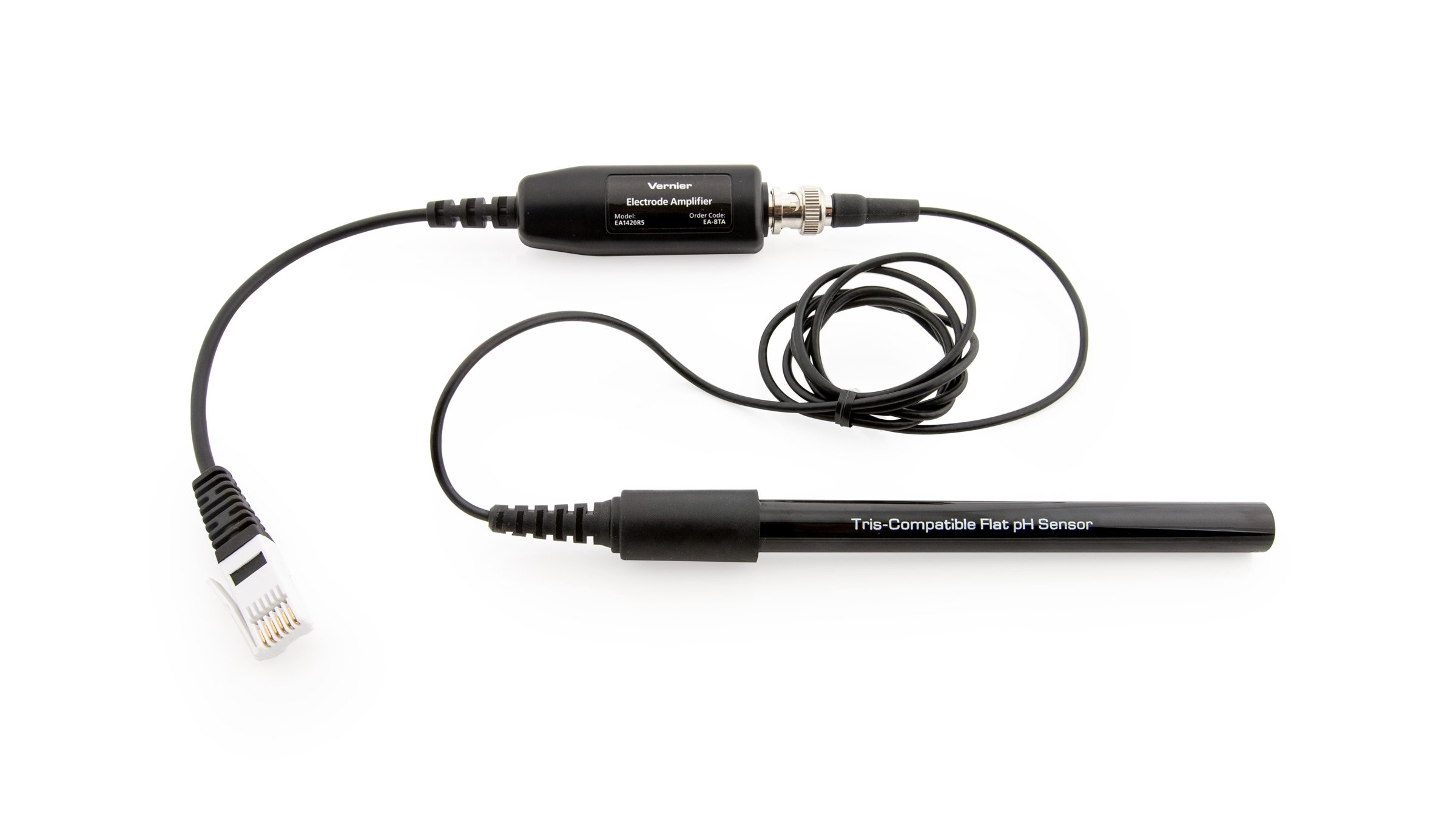Tris-Compatible Flat pH Sensor (FPH-BTA )

Troubleshooting
- Primary Test: Does it read approximately 4 in its storage solution? (pH 13-14 indicates 0 volts, possibly a defective or damaged sensor)
- Secondary Test: Take readings in fresh buffers, NOT distilled water! If no buffers are available, try it in vinegar (~ pH 2.5-3.5) and ammonia (~ pH 10.5-11.5). If readings do not change when the sensor is placed in different solutions, the sensor is possibly defective or damaged.
Additional Troubleshooting
OPERATION
- My Tris-Compatible Flat pH Sensor reads mV instead of pH.
- Why doesn't my pH Sensor read pH 7 in distilled or deionized water?
- The pH electrode I have been using no longer seems to work or is slow to respond. Is there anything I can do to fix it?
- What type of liquids cause problems for the pH Sensor?
- The liquid inside my pH Sensor is low or gone. Will it still work?
- Will I get interference when I put two sensors in the same solution?
- Is the flat pH sensor more durable than regular pH sensor?
CALIBRATION
- How do I calibrate my sensor?
- How do I calibrate a sensor in Logger Pro?
- How do I save a custom calibration to my pH sensor?
- During calibration, what are the typical potential output readings for the PH-BNC electrode?
MAINTENANCE and STORAGE
- How can I keep my pH or ORP storage solution from spilling when the sensor is in use?
- Where do I get pH or ORP Storage Solution? (Buffer Storage Solution)
- What is the best way to clean the glass bulb of the pH electrode?
- Do any of your sensors require special storage?
- I bought your pH buffer capsules. Can I make storage solution for my pH Sensors with this kit?
- My pH sensors were stored dry. Will they still work?
- How do I dispose of my pH sensor?
Specifications
- Electrode type: Double-junction, sealed, gel-filled, Ag/AgCl reference, polycarbonate body
- Membrane style: Flat glass
- Range: pH 0–14 (Some sodium error in ranges greater than pH 12 due to thicker glass and higher impedance values)
- Accuracy with new electrode (pH): ±0.2
- Temperature range: 5 to 80 °C (readings not compensated)
⚬ Isopotential pH: pH 7 (point at which temperature has no effect) - Storage solution: pH 4/KCl solution (10 g KCl in 100 mL buffer pH-4 solution)
- Dimensions
⚬ Shaft diameter: 12 mm OD
⚬ Cable: 1 meter coaxial cable with BNC connector - Default calibration coefficients: slope –7.78; intercept 16.34
Calibration
Calibrate? Usually no. However, for the most accurate measurements with this sensor, we recommend calibration. It is a simple process that only takes a few minutes. Custom calibrations can also be stored directly onto the sensor.
- For calibration instructions, see: How do I calibrate my sensor?
- To save a calibration to a particular sensor, see: How do I save a custom calibration to my pH sensor?
- Where do I get pH buffer solutions?
Typical Calibration Voltages
⚬ In pH 4 buffer: ~1.56 V
⚬ In pH 7 buffer: ~1.19 V
⚬ In pH 10 buffer: ~0.82 V
Related Products
- Electrode Support (
ESUP ) - Microstirrer (
MSTIR ) - Stir Station (
STIR ) - Drop Counter (
VDC-BTD ) - Precision Volume Dispenser (
DC-DISP ) - Go Direct® Tris-Compatible Flat pH (
GDX-FPH )
Replacement/Maintenance Parts
- Flat pH Electrode BNC (
FPH-BNC ) - pH Buffer Capsule Kit (
PH-BUFCAP ) - pH Storage Solution (
PH-SS ) (500 mL bottle) - Storage Solution Bottles (5) (
BTL ) - Electrode Amplifier (
EA-BTA )
